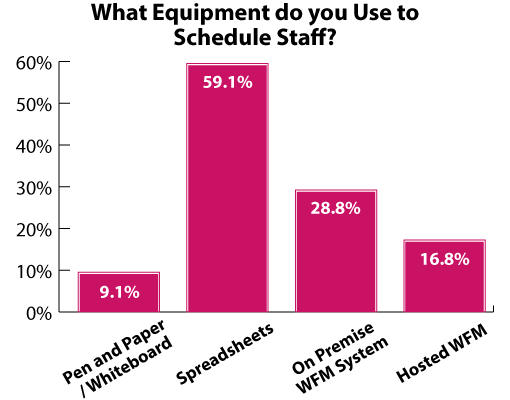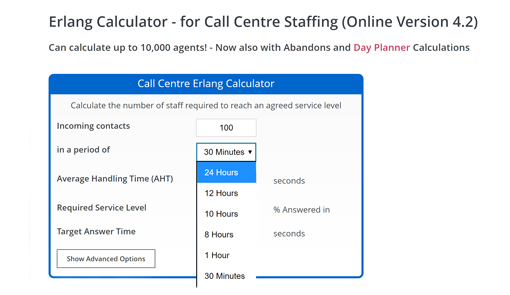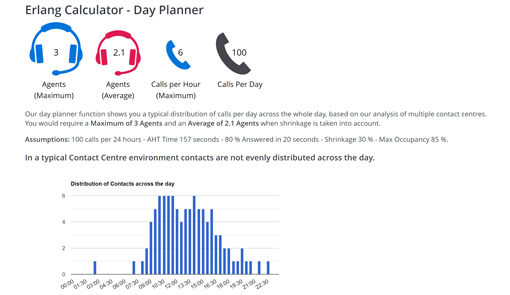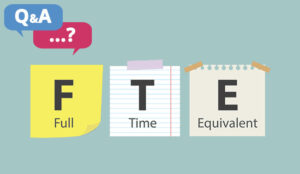Do you need some help calculating the minimum number of agents required for a 24-hour call centre?
Our Call Centre Helper reader panel explain all…
What Shift Patterns Should I Use?
The length and number of shifts is unique to your call centre. There is no definitive answer.
However, we do have some pointers for you to consider. Usually shifts range between 8 hours and 12 hours. There are a number of shift patterns you could adopt, including fixed shift, flexi-time, annualised hours and rotating shifts. Ideally, your choice of shift pattern would minimise absence and maximise productivity.
As many of our readers have hands on experience with organisation of shifts, we turned to them for their helpful advice and here’s what they said:
Eight-Hour Shifts
Many companies run eight-hour shifts running –
- 8 am till 4pm (Day Shift)
- 4pm till midnight (Evening Shift)
- Midnight till 8 am (Night Shift)
12 Hour Shifts
For a minimum number of staff, you could use 12 hour shifts –
- 8 am till 8 pm (Day Shift)
- 8 pm till 8 am (Night Shift)
Example Calculation:
- Coverage Requirements – 3 FTEs at all times
- Shift Length – 8 hours
- Shifts per Day – 3 shifts per day
- Staff per Day –
3 FTEs * 3 shifts = 9 staff needed per day - Days Off Coverage –
Employees work 5 out of 7 days, so you need extra staff to cover the 2 days off. This increases the required staff by 2/5 (or 40%).
9 staff per day * 1.4 = 12.6 = 13 staff (rounding up) - Holidays and Sick Leave –
Assume an additional 25% for holidays and sick leave.
13 staff * 1.25 = 16.25 = 17 staff (rounding up)
Productivity of Agents Drop off After Six Hours
I’ve seen that regardless of shift length, the productivity of the agent drops off after six hours.
“With personal experience of both ten hour and eight hour shifts, I’ve seen that regardless of shift length, the productivity of the agent drops off after six hours. So I would rather pay for two hours of non- productivity rather than four! Eight-hour shifts allows for more concentrated work to be done during the day.” said Jenny, a Call Centre Helper Reader
What FTE Do I Need to Cover a 24/7 Call Centre?
You can use the Erlang calculator to work out the full time equivalent (FTE), which is the equivalent headcount to one person working full time. From the FTE, the staff numbers can be calculated.
However, we have received some recommendations on FTE from our readers too:
Minimum Would be 4.2 FTE
The absolute bare minimum would be 4.2 FTE on paper, if you wanted to stick to no more than 40 hours per agent per week.
24×7 = 168 hours per week to be covered.
168/40 = 4.2 FTE
However, you need to bear in mind that with five members of staff, it only leaves 32 hours per week available for vacation or sick coverage. This may seem narrow, but it can be done.
Used to be 5.4 FTE
It always used to be 5.4 FTE, as a rule of thumb, to staff one position for 24/7. Therefore, this equates to 11 agents for two 24/7 positions. Whilst this allows for holiday and sickness cover, it doesn’t easily cover break periods.
What Tools Should I Use?
There are various tools in use across the contact centre industry – some embrace the extensive capabilities of a WFM system, whilst others rely on pen and paper.
Here’s a snapshot of what equipment contact centre teams are using to schedule their staff:

Most call centres are using spreadsheets to schedule the staff in their contact centre.
Workforce Management (WFM)
Workforce management (WFM) can be used to schedule the staff into the call centre. A WFM software can be used to determine the staffing of the call centre, with the ability to factor in shift schedules and patterns, as well as the channels in which the calls are being managed.
However, should you want a more hands on approach, as 68.2% of companies do, use of a formula or spreadsheet may be better suited.
The Erlang C Formula
A basic schedule can be created with the reliance upon formulas, such as the Erlang C formula, which will provide a minimum answer. The Erlang C formula takes into consideration the number of calls, call reporting, call duration, service level and target answer times to give the number of agents.
The Erlang C formula can be worked out manually, we have worked example which takes you through the steps, or with the use of an Erlang calculator.
There is both an online calculator and spreadsheet version of the Erlang calculator.
Top Tip – Change the Values of the Parameters for 24 Hour Staffing
We have a version of the Erlang Calculator, which figures the number of staff needed to reach an agreed service level. When you change the values of the parameters, it becomes a 24 hr staffing calculator.

The Call Centre Erlang Staffing Calculator showing a capacity for 24 hours.
This gives an output of the number of agents you will need for the 24 hours, as well a graph of the distribution of calls across the period.
Click here to go to the Online Erlang Calculator for Call Centre Staffing

This is an example output of the Erlang Calculator, with a graphic of the maximum and average agents and a graph of the distribution of the calls across 24 hours.
For further information, take a look at these articles next:
- How to Work Out How Many Staff You Need in a Contact Centre
- The Best Shift Patterns for the Contact Centre
Author: Jonty Pearce
Reviewed by: Hannah Swankie
Published On: 20th Aug 2008 - Last modified: 9th Oct 2024
Read more about - Call Centre Questions, Erlang Calculations, Full Time Equivalent (FTE), Staffing















